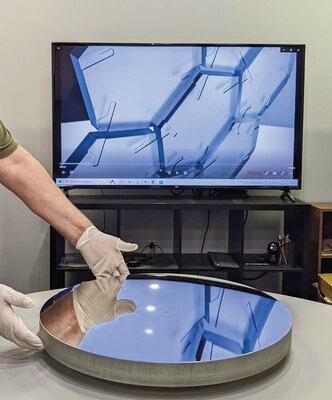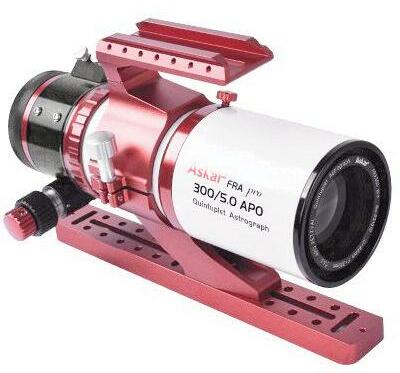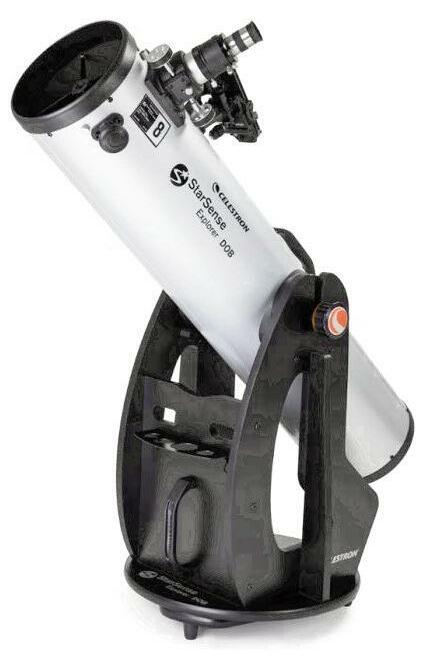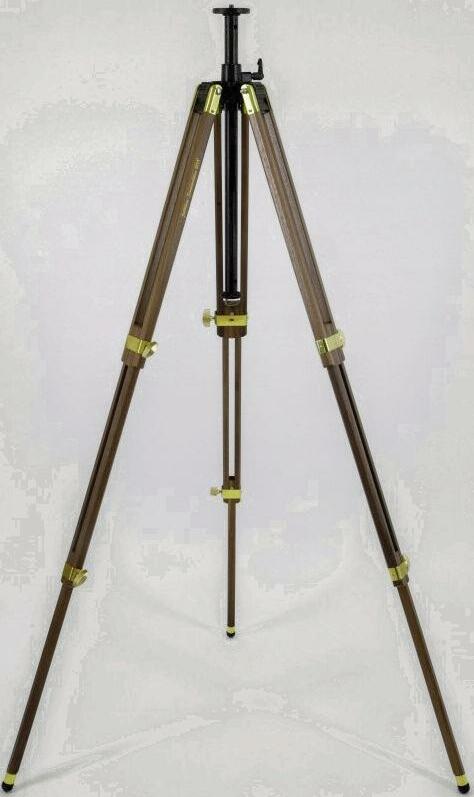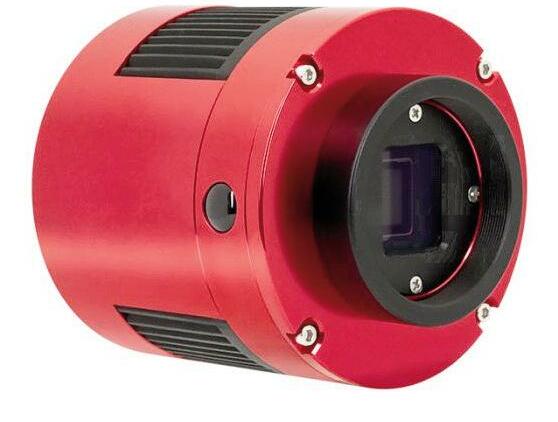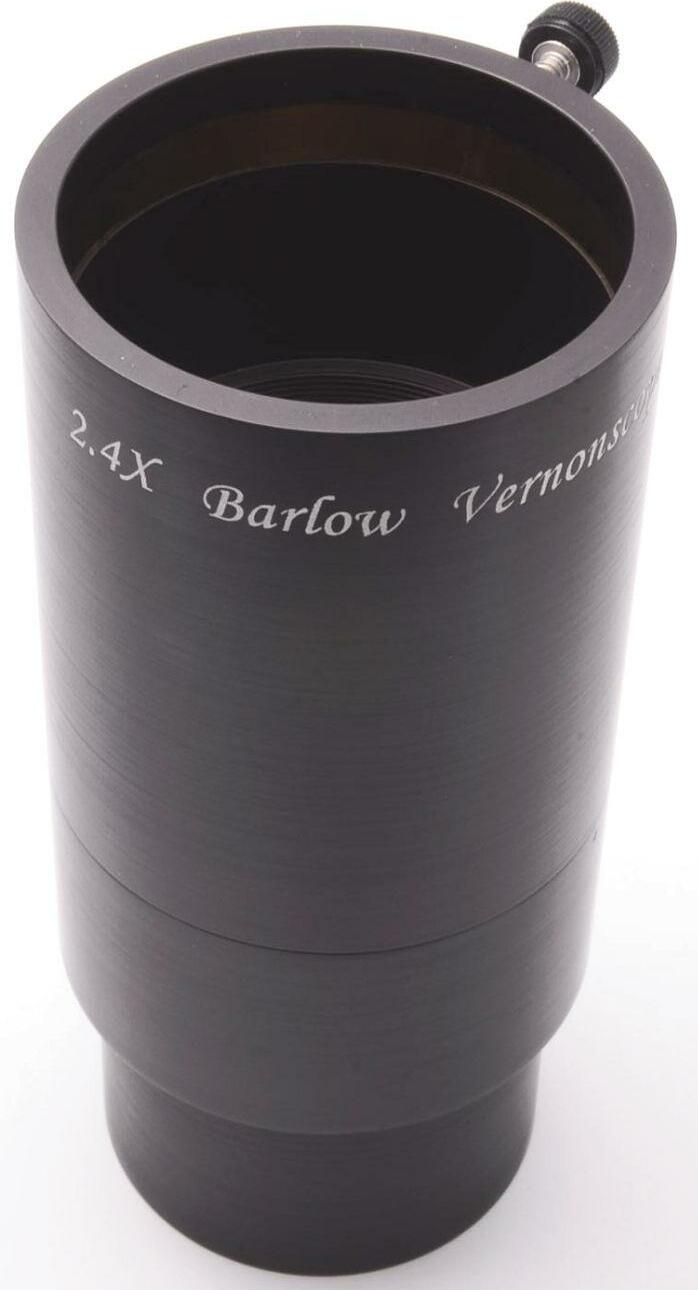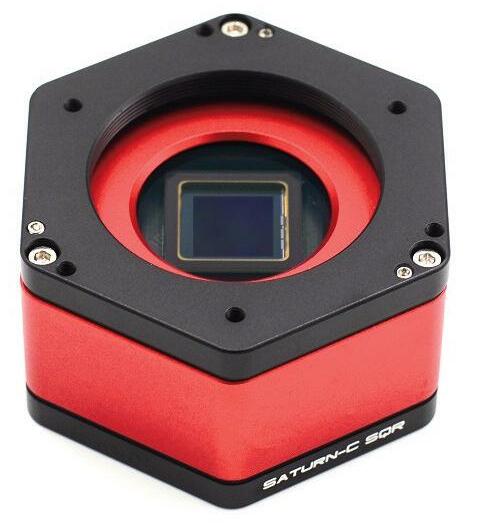
11 minute read
VIXEN SLV EYEPIECES
IN VIDEO CAMERAS FROM MALLINCAM
The MallinCam SkyRaider DS10c
MallinCam introduces a new addition to the SkyRaider Video Camera Series. The DS10c has a 10.7-megapixel, back-illuminated, Sony IMX294 Class 1, hand-selected CMOS industrial sensor that has no amp glow. The DS10c has four gigabits DDR internal memory, enabling a smooth and effective image transfer and easing the resources on the computer’s USB 3 connection. Fan-assisted passive cooling keeps the CMOS sensor’s temperature stable. No Peltier cooler is needed, as the software can eliminate the noise and the hot and warm pixels that occur during live-viewing and imaging sessions. The sensor supports full 4K resolution for high-resolution live images in full colour. The case was designed for use with HyperStar-compatible optical systems—perfect when a smaller obstruction is needed. The large-diameter, highly sensitive sensor will satisfy the most demanding video imager. The MallinCamSKY software makes the DS10c a highly desirable camera to own. The software includes conversion gain, dark-field correction, flat-field correction and digital binning up to level 4x4. This increases sensitivity to levels never before achieved in a large-format CMOS sensor. The DS10c is fully compatible with the MallinCam Universe T-mount 0.5x focal reducer. The MallinCam SkyRaider DS10c comes fully equipped with a 5-metre (16.4 ft) USB 3 high-grade cable, 2-inch to T-mount adapter and 2-metre (6.5 ft) guiding cable. Software can be downloaded from the MallinCam website.
:Introductoryprice $949.99USD


The MallinCam SkyRaider DS287
There are few things in life where one must “see it to believe it.” The new MallinCam DS287 is one of them. Never has an astronomical camera had so much sensitivity that instant live views could be achieved. Fitted with the Sony IMX287 industrial CMOS sensor (which dominates the market of high-sensitivity, low-noise, high signal-to-noise-ratio sensors), this camera is designed to offer unmatched performance at a reasonable price. We offer a colour or monochrome version (c/m). The MallinCam SkyRaider DS287c/m is perfect for outreach programs at schools, colleges, universities, planetariums, museums and astronomy clubs or for the ultimate in live personal observing. It comes with MallinCamSKY software, which allows live stacking (either averaged or additive), dark-field correction, flat-field correction, gain adjustment and much more for fine-tuning the image on the computer screen. This camera performs with stunning sensitivity with very short exposures. All components are industrial Grade 1 throughout the circuitry, and the Sony IMX287 CMOS industrial sensor is Class 1. Included are a 1.25-inch eyepiece adapter, a 2-metre (6.5 ft) guiding cable and a premium 5-metre (16.4 ft) USB 3 heavy-duty cable. The camera can achieve 525+/- frames per second (FPS), making the SkyRaider DS287c/m the ultimate planetary, lunar, solar (with proper solar filtration) and deep-sky camera. Be ready to be impressed! It’s a MallinCam, the pioneer in live-video astronomy. A GREAT GALAXY-HUNTING CAMERA—IDEAL FOR YOUR SUPERNOVA SEARCH!
:Introductoryprice $389.99USD

All MallinCam products are high-performance video CCD/CMOS cameras and the most desired astronomical observational video systems available. ALL PRICES IN U.S. FUNDS MallinCam.com
Available in the U.S.:
Jack’s Astro Accessories, Louisiana. http://mallincamUSA.com
In Canada:
Khan Scope Centre, 3243 Dufferin St., Toronto, Ontario. www.khanscope.com Focus Scientific, 911 Carling Ave., Ottawa, Ontario. www.focusscientific.com
Vixen SLV Eyepieces
High-Quality, Flat-Field Eyepieces
By Erik Wilcox
The Vixen SLV eyepieces feature high-grade lanthanum glass with fully multi-coated optics and seven lens elements in four groups. Having used some older Vixen lanthanum (LVs) eyepieces with excellent optics in the past, I was very excited to try the SLVs out.
I was immediately impressed with the overall build quality and attention to detail. It ’ s easy to see that Vixen did their homework in designing these eyepieces. The twist-up eye guards have multiple individual click-stops, which makes it easy for the observer to quickly adjust the eyepiece to their exact setting without a lot of fuss. The chrome barrels feature blackened interiors that are threaded for filters and rubber eyepiece caps which fit securely (a big pet peeve of mine).
What I also found to be very clever was the outside shape of the barrel –instead of a standard round barrel, it is hexagonal shaped and has a nice rubber grip. This, of course, prevents the eyepiece from rolling away if it ’ s set on its side on a flat surface such as an observing table. It ’ s the little things like this that make real differences under the stars.
Other specifications include 20 mm of eye relief and an all-metal body. One thing I found particularly useful was the large numerals designating the focal lengths on the sides of the eyepiece barrels (“25” , “10, ” etc.) – very easy to read at night!
My testing was done with three telescopes: a 16-inch f/4.5 truss-tube Dob sonian equipped with a coma-correcting device; an 8-inch f/5 Newtonian reflector also equipped with a coma-correcting de-

vice, and an 80-mm f/7 ED refractor. In the latter telescope, I used a turret device for quick comparisons. I compared the 25-mm SLV to a premium 24-mm wide-field eyepiece; the 10-mm SLV to a 10-mm Plössl eyepiece and a premium 9mm wide-field; and, finally, the 5-mm to an inexpensive 6mm widefield and a premium 6-mm wide-field (as I didn ’ t have another 5-mm eyepiece handy).
I often use optics for daylight observing, so my first comparison was simply looking at some Ohia Lehua trees in my backyard through the 80-mm refractor. I could see very little difference in comparing the 25-mm SLV to the pricier 24mm wide-field. The two eyepieces were nearly parfocal with each other, so it was easy to go back and forth with the turret device for quick and easy comparisons. Both eyepieces performed admirably, with excellent color correction and good contrast. I felt the twistup eye guard on the Vixen was more convenient for daylight use than the flipup (one position) rubber eye guard on the 24-mm wide-field.
Things were a bit different with the 10-mm SLV. It showed noticeably better contrast than the 10-mm Plössl and was much more comfortable to use due to the better eye relief and previously mentioned twist-up eye guard. Comparing the 10-mm SLV to the 9-mm wide-field was a bit more of a challenge due to differences in magnification and apparent fields of view (AFOV), but the 10-mm SLV performed just as well.
Regarding the difference in contrast – specifically what I saw that set the 10-mm SLV apart from the 10-mm Plössl –was deeper and more vibrant red color on the Lehua flowers and greener greens on the Ohia leaves. This difference wasn ’ t apparent when comparing the 10-mm SLV to the 9-mm wide-field but was quite noticeable compared to the 10-mm Plössl. The 10-mm Plössl is advertised as multi-coated, and I’ ve always considered it an eyepiece of acceptable quality, so was a bit surprised at the rather noticeable difference in per-
formance.
The 5-mm SLV is an eyepiece that really stood out. Although it was difficult to compare to the 6-mm eyepieces due to the differences in magnification, the SLV was clearly better than the inexpensive 6-mm wide-field. The SLV snapped into focus better, had better color correction, and was much more enjoyable to use. It had rained the night before and the raindrops that were collecting on the Ohia leaves were noticeably more vibrant and pleasant to look at through the 5mm SLV. By comparison, the views through the inexpensive

6-mm wide-field looked rather dull and uninspiring. There was less of a difference when comparing the 5-mm SLV to the well-known 6-mm wide-field, but I still preferred the SLV due its ease of use for daylight observing and slightly better contrast.
I was finally able to do some comparisons at night after some unseasonably frequent rainstorms cleared up. Observing from Mauna Kea State Park at 6500-feet elevation with the 16-inch Dob and the 80-mm refractor under a waxing crescent moon, I quickly found the SLVs to be exceptionally good eyepieces. I saw no ghost images, stray reflections or false color with the SLVs when observing the Moon. The 25-mm and 10-mm SLVs snapped to focus very well (the 5-mm was a bit too much magnification in the big Dob on this particular night) and showed crisp images and a wealth of detail and shadowing in the craters. Again, I found the twist-up eye guards to be convenient and easy to use. There was very little kidney beaning or blackout, even on the Moon; I was very pleased as I find that this aberration can be very annoying.
I looked extensively at the edge correction of the SLVs when observing stars with the 16-inch. The 10-mm and 5mm SLVs have perfect edge correction; there was no visible field curvature, astigmatism, or other aberrations right up to the field stop through either telescope. The 25-mm SLV showed a vague hint of field curvature through the 16-inch right at the field stop, but this didn ’ t hurt the overall views. I found the edge correction and color correction to otherwise be perfect. The faint field curvature was something I had to search for and probably wouldn ’ t have even noticed had I not been looking for it.
On Jupiter, the 10-mm showed better contrast than the 10-mm Plössl through the 16-inch Dob at 210x. The cloud belts stood out better and had slightly more color. The disk also stood out a bit more against the background sky, and the sky was slightly blacker through the 10-mm SLV. While this difference didn ’ t seem as apparent when compared to the more expensive 9-mm wide-field, it was difficult to compare due to the slight difference in magnification. The 9-mm wide-field is about double the price of the Vixen SLV, so the Vixen performed very well. The ease of use with the 10-mm SLV stood out here as well when compared to the 10-mm Plössl, which was difficult to look through.
The 5mm SLV performed very well on Jupiter, Saturn, and the Moon through the 80-mm refractor. At 140x, Jupiter ’ s moons were crisp pinpoints that defocused into perfect spheres, and

Jupiter
’ s disk showed three cloud belts clearly with excellent color and contrast. This was not the case with the inexpensive 6-mm wide-field I used for comparison, which showed a good amount of scatter and internal reflections.
The SLVs also fared well on deepsky objects. I generally prefer wide-field eyepieces of 70 degrees or more due to the fact that all my scopes are un-driven. Despite this limitation, I enjoyed using the Vixen SLVs very much, and the 50- degree AFOV provided excellent views. From my backyard at 4500-feet elevation, I had several great nights of observing to use and compare the SLVs with various other eyepieces in my collection.
Observing Omega Centauri through the 16-inch Dob presented my eyes with an array of stars that filled the 25-mm SLV eyepiece at 84x. Stars were resolved right to the core and had excellent color and sharpness. The views were equally strong with the 10-mm SLV at 210x, although the object didn ’ t fit into the entire field of view.
After midnight, I was able to get some excellent views of M22 as well as various nebulae (Lagoon, Trifid, Swan) in Sagittarius with the 16-inch. M5, M13, and the Ring Nebula also showed excellent detail through the 25-mm and 10-mm SLVs. I attempted to view the central star in M57 with the 5-mm at 421x but was unable to on this particular night due to the sky conditions.
On the other side of the sky, M51 was high enough to get some nice views and the 25-mm SLV performed well on this object. I could clearly see both components of M51 with direct vision and the contrast was very impressive.
Time and time again, the SLVs outperformed the 10-mm Plossl and inexpensive 6-mm wide-field on planets and deep-sky objects. The SLVs were also equal in performance to the more expensive eyepieces I compared them to, and in many cases were more comfortable to use.
Overall, I am very impressed with just about everything that the Vixen SLVs offer. They are well designed and have excellent build quality, exquisite optical quality, are extremely easy and comfortable to use, and offer good value. Despite the intricate seven-element lens design, the SLVs are lightweight and won ’ t cause balance issues. The Vixen SLVs would be an excellent purchase for someone seeking to upgrade from standard Plössls or other eyepieces of similar quality. For anyone seeking great allaround eyepieces capable of providing excellent views of a wide array of objects, day or night, I would highly recommend the Vixen SLV eyepieces.






